Now that the Sierra de las Nieves has been declared a National Park, there are 16 stunning national parks in Spain to visit. Ten are in the Iberian Peninsula, four are in the Canary Islands and one is in the Balearic Islands. National parks are different to natural parks in that the area they cover is predominantly wilderness with less human impact in their history and evolution. Natural parks on the other hand are areas of outstanding natural beauty and biodiversity that have also been shaped in someway by human occupation, agriculture etc.

It goes without saying that they are obvious destinations for wildlife enthusiasts like myself but until one visits one or all of these parks it is hard to imagine the incredibly biodiversity of these areas located on the iberian peninsular and Spanish islands.
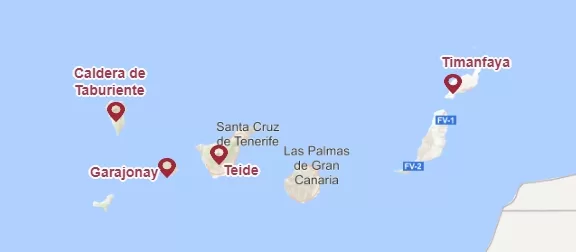
I hope this article is of use and please share with your friends and family. Any and all comments are always welcome!
About Wildside Holidays: https://wildsideholidays.co.uk/about-wildside-holidays/
Video showing 15 of the 16 national parks in Spain
The 16 national parks in Spain
Click the green links below to read more in depth information about each of the National Parks in Spain
Illas Atlánticas de Galicia in Galicia created in 2002 covering an area of 8,480 ha

In English these islands are known as the Galician Atlantic Islands Maritime-Terrestrial National Park. In the past they were known as a pirate haunt but today they are uninhabited and only open to the public in the summer. In this way they are preserved as a natural haven, without haste, without traffic. Just the sound of the waves and the wind.
In addition to the Cíes Islands, the National Park includes the islands of Ons, Sálvora and Cortegada. In Ons don’t miss the mysterious “furnas“, granite sea caves cut by the waves, such as the mythical “Burato do Inferno“, which was “believed to go all the way down to hell, and on stormy nights the voices of the dead could be heard”.
The Park’s most representative natural systems are the coastal area and the Atlantic Continental Platform. All the islands have areas reserved as breeding grounds for numerous colonies of birds, principally the yellow-legged seagull and the shag. In the sea, there is the possibility of sighting cetaceans like the finback whale which frequents these waters in the summer. The beds of kelp are also of importance in these waters.
There is regular passenger transport service by sea to the Cíes from the ports of Vigo, Baiona and Cangas during high season. There is the same service to Ons from Portonovo, Sanxenxo, Bueu and Marín.
Services of a guide to Cortegada is from Carril (Vilagarcía de Arousa). (Sálvora has no transport service by sea, and access to it is restricted.)
This national park controlled access with a maximum of 2,200 people daily allowed on the islands.
Picos de Europa in Asturias, León and Cantabria created in 1918 and covering an area of 67,127 ha

The Picos de Europa belong to three of Spain’s Autonomous Communities, Asturias, Castilla León and Cantabria. The summit of Pico Tesorero (2,570m) in the Central Massif, is the point at which the three regions join. The highest summit in the Picos de Europa is Pico Torrecerredo at 2,648m in the Central Massif, Peña Santa at 2,596m is the highest in the Western and the Morra de Lechugales at 2,444m the highest in the Eastern making this area the third highest mountain range of mainland Spain after the Pyrenees and the Sierra Nevada. The range includes 14 peaks over 2,600m. The most well-known of these mountains is Naranjo de Bulnes (2,519m).
First created in 1918 to mark the 12th centenary of the Battle of Covadonga, the area originally given National Park status covered almost 17,000 ha. in the Western Massif only and was named “Parque Nacional de la Montaña de Covadonga” (National Park of the Covadonga Mountains). It wasn’t until the 30th of May, 1995 that the Picos de Europa National Park was enlarged to encompass the other two massifs.
The area is absolutely stunning and several types of forests can be found in the area with trees including beech and the Cantabrian Oak. There are many protected animal species, like the Cantabrian capercaillie (Tetrao urogallus cantabricus), the Bearded vulture (Gypaetus barbatus), the Cantabrian brown bear and the Iberian wolf (Canis lupus signatus). The most representative animal of the Picos de Europa is the Cantabrian chamois (Rupicapra pyrenaica parva) or rebeco, of which there are many sculptures around the park; as well as the Spanish ibex (Capra pyrenaica).
Find hotels and other accomodation in the Picos de Europa here
Cabrera Archipelago in the Balearic Islands created in 1991 and covering 90,000 ha

With the approval for the extension of the Cabrera Archipelago Maritime-Terrestrial National Park. and in addition to the land areas, an extra 80,779 hectares of adjacent marine areas have made this Spain’s largest National Park. At a total of 90,000 hectares, the Cabrera Archipelago National Park is set to become one of the most famous sanctuaries for cetaceans and large migrating fish, as well as for it’s deep coral banks. There are 19 islands and islets in the archipelago and the whole area is a Special Protection Area for Birds.
If you are staying on Mallorca then a trip to this beautiful island really should be on your bucket list. There are quite a few companies offering boat trips to the island from the port in Colònia de Sant Jordi.
Find hotels in the Balearic Islands here.
Monfragüe in Extremadura created in 2007 and covering 18,396 h

A relatively small national park, Monfragüe is a well known birders paradise. Close to the beautiful town of Plasencia with the Tagus river running through it. Woods of oak and wild olives cover the peaks and valleys and there are plenty of mammals as well with deer, genet, badger, lynx, wildcat and otter…. It really is a naturalists paradise.
One of the most popular wildlife watching areas is the Salto de Gitano. Look out for black vultures, eagles and black storks amongst the many griffon vultures.
Although ruined and virtually nothing remains standing, the castle of Monfragüe is well worth a visit.
The only town within the park area is Villareal de San Carlos where there is a wildlife information centre. Every year this town also hosts the Extremadura International Ornithology Tourism Fair
Find hotels in Monfrague and surrounding areas here.
Tablas de Daimiel in Castile-La Mancha created in 1973 and covering 3,030 ha
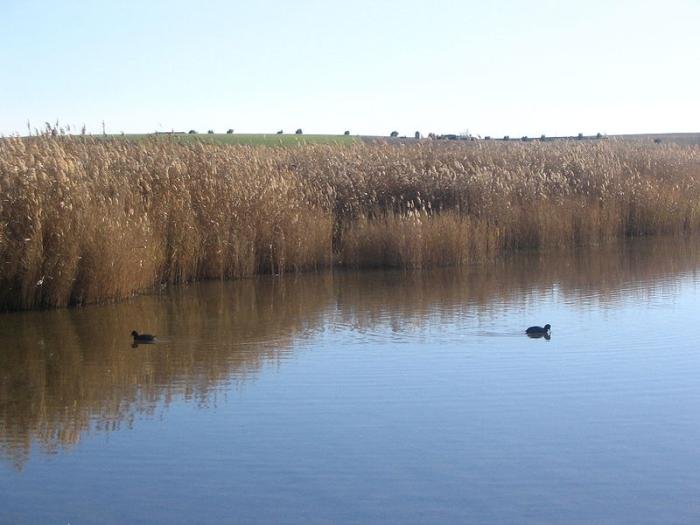
The Tablas de Daimiel are important wetlands unique in Spain being a complex ecosystem that mixes the features of a floodplain, produced by the confluence of the Guadiana and Gigüela rivers and a large aquifer groundwater discharge area.
Over the years there have been issues with illegal water extraction reducing the surface area of the wetland and after a severe drought even undergroound fires in 2009 (peat bogs can burn when dry.) But, the area does seem to have recovered somewhat and is well worth a visit especially for anyone interested in birdlife.
Open every day, access to the boardwalks across the marshes is free opening times in summer are from 9h to 21h, in winter it closes at 18h.
The address of the Park is: Carretera de las Tablas, km 10. The main route to access the National Park is the N-420 Ciudad Real road to Puerto Lapice, passing through Daimiel.
The Centro de Visitantes del Parque Nacional (National Park Visitors Centre) Should be your first place to visit before you explore the boardwalks across the marshes to the bird hides.
Cabañeros in Castile-La Mancha created in 1995 and covering 40,856 ha

The Cabañeros National Park is located in the provinces of both Toledo and Ciudad Real (Castilla-La Mancha), in the very heart of Spain.
The area is outstanding because of its abundant fauna, including many endemic species. Meadows, mountain ranges and massifs covered with Mediterranean forests and thicket make this a beautiful landscape. It is also the habitat of many endangered animal species, especially birds (black vultures, Spanish imperial eagles, golden eagles). Large mammals also live in Cabañeros (45 recorded species). It is easy to spot deer, wild boar and roe deer. Iberian lynx are occasionally seen but are still very rare in this area.
The park area is largest surviving area of Iberian Mediterranean forest, with an enormous variety of plant species. It also includes sites of great geological interest The most famous being the Paleozoic sites known as Cámbrico y Ordovícico del Parque Nacional de Cabañeros.
Find places to stay near to the Cabañeros national park here.
Sierra Nevada in Andalusia created in 1999 and covering 85,883 ha
Situated between the provinces of Almería and Granada in Andalusia, The Sierra Nevada National Park combines scenic beauty and ecological importance, as well as being home to the highest peaks on the Iberian peninsula. It was declared a Biosphere Reserve by UNESCO in 1986 and then in 1999 gained status of National importance.
Simply stunning scenery with gentle slopes and steep cliffs and also with fifteen of its mountain peaks over 3,000 metres. On the Iberian peninsula Mulhacén and Veleta are the highest mountains. Shaped by its glacial origins and containing forests and diverse areas of natural vegetation.
The flora and fauna of the Sierra Nevada are unique. During the last ice age, species moved south to escape the colder climate in the north, and as the climate grew warmer again, these species survived by taking refuge in the mountains. 2,100 plant species have been catalogued in the park, 116 of which are classified as threatened and over 60 are unique to the area.
The park is home to a thriving Spanish ibex population, along with other species such as wild boar, martens, badgers and wildcats. Native bird species include the Golden Eagle, Bonelli’s Eagle, Common Kestrel, Little Owl, Eurasian Eagle-owl, European Goldfinch, Serin, Ortolan, Dartford Warbler, Wheateater, Red-legged Partridge and Common Quail.
Well worth a visit is the Botanic Garden of Cortijuela, where the endemic species of the Sierra are investigated and preserved.
If you are into skiing then the Sierra Nevada Ski and Mountain Resort is for you. Just 32 km from Granada, it has 105,44 km of runs, with 118 signed pistes for all levels and excellent quality snow. It also has a cross-country skiing circuit, Snow Park and recreational areas for non-skiers.
Find high altitude hotels for skiing here.
Another good base for exploring the area is the village of Trevelez find a hotel here.
Doñana Wetlands in Andalusia created in 1969 and covering 54,252 ha
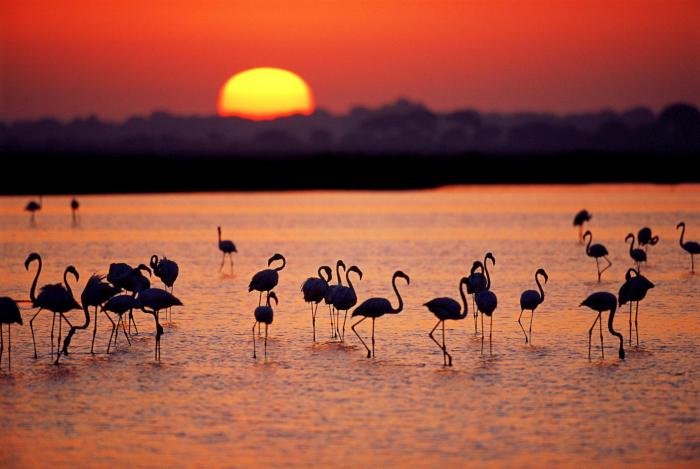
Situated in the region of Andalusia in southern Spain, between the provinces of Huelva and Seville The Doñana National Park has a biodiversity that is unique in Europe. The park features a great variety of ecosystems and wildlife including thousands of European and African migratory birds, fallow deer, Spanish red deer, wild boars, European badgers, Egyptian mongoose, and endangered species such as the Spanish imperial eagle and the Iberian lynx.
The best visitor centre in my opinion is between the village of El Rocio and Matalascañas. There is a great exhibition centre about the area and also trails leading to hides across boardwalks to various ponds and lagoons. You can also find out about the endangered Iberian lynx here as this area really is one of the most important strongholds of this beautiful species of wild cat. The centre is on the A-483 El Rocío to Matalascañas at Km. 12
Right in the heart of the Doñana national park is the small village of El Rocio. Find a hotel here.
Ordesa y Monte Perdido in Aragon created in 1918 and covering 15,608 ha
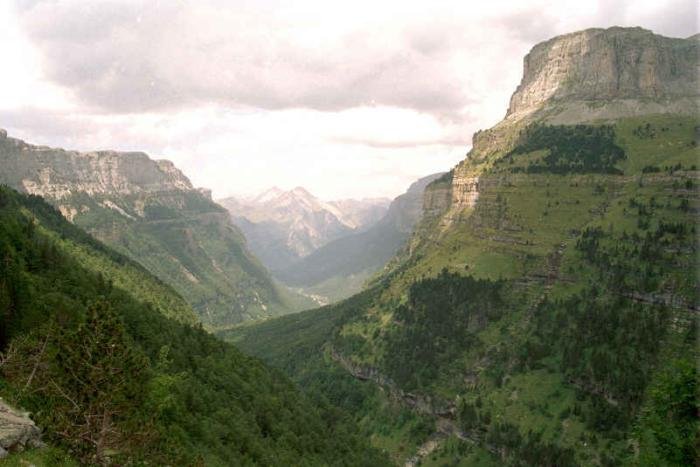
This part of the Pyrenees mountain system and the Monte Perdido National Park is an incredibly beautiful place with a landscape of towering summits and a huge variety of ecosystems deriving from both the Atlantic and Mediterranean which gives the area such a rich and diverse flora and fauna. The scenery is dominated by the great massif of Monte Perdido (3,355 m), with the peaks of the Tres Sorores branching out into the valleys of Ordesa, Pineta, Añisclo and Escuaín.
At one time the most important species of the Park was the bucardo or Pyrenean ibex which unfortunately went extinct in 2000 despite of various preservation projects.
Look out for the Pyrenean chamois on the cliffs and other species such as the alpine marmot, boar and the Pyrenean desman or water-mole. Raptor birdlife is extensive with golden eagle, bearded vulture, griffon vulture, hawks, falcons and eagle owl.
There are extensive forests of beech, pine, birch, oak that are simply stunning in the autumn months, Interestingly the beautiful edelweiss (Leontopodium alpinum) made famous by the song of the same name in the film “The Sound of Music” is one of the symbols of the National Park.
There are six excellent information points in the area (Two of them centres with exhibitions etc) in the area so wherever you are staying one will be nearby.
Find hotels in Ordesa y Monte Perdido here.
Timanfaya in Las Palmas (Lanzarote island) Canary Islands created in 1974 and covering 5,107 ha
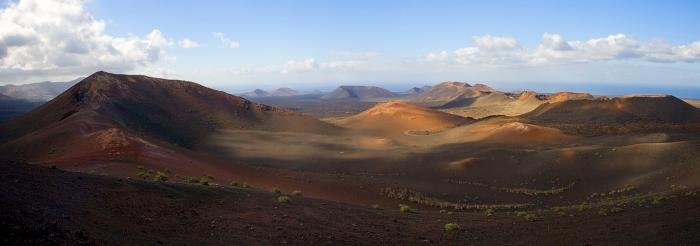
After the initial creation in 1974, UNESCO designated a Biosphere reserve covering the whole of the island of Lanzarote in 1993. Access to the core areas of the park is strictly regulated to protect the delicate flora and fauna.
There are one or two footpaths, and a popular short route where one can visit by camel (The Echadero de los Camellos on the main road from Yaiza LZ-67 not far from in information centre.) There is also a public car park from which you can take a guided tour of the volcanic landscape by bus.
Spectacular fields of solidified lava make up the island of Lanzarote and the Timanfaya national park is the land of volcanoes. Volcanic eruptions and magmatic activity throughout history has sculped this land into what we see today.
The natural viewpoint of Montaña Rajada gives you spectacular views over a vast sea of lava that reaches down to the sea.
Find hotels in Lanzarote here.
Aigüestortes i Estany de Sant Maurici in Catalonia created in 1955 and covering 40,852 ha
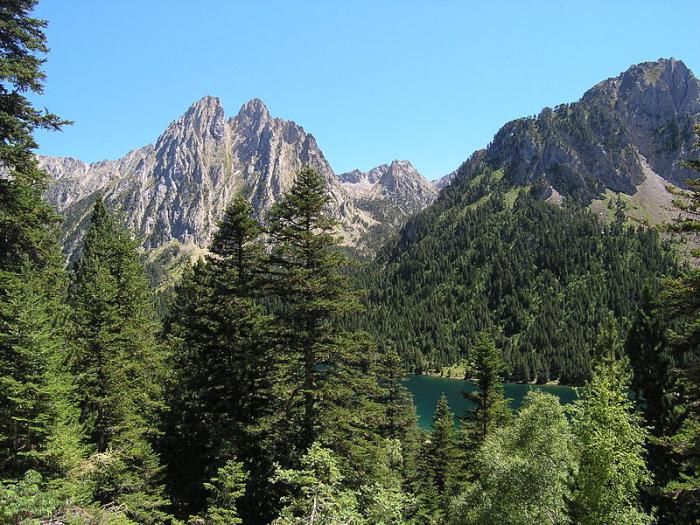
Located in the province of Lleida (Catalonia), the Aigüestortes i Estany de Sant Maurici National Park contains the stunning high mountain features of the Pyrenees. Its crystal-clear lakes, rivers and waterfalls make this Pyrenean landscape rich in wildlife. A true paradise for nature lovers with something for everyone in its lakes, torrents, waterfalls, peat bogs, rocky slopes, rugged peaks and thick forests of black pine, fir, Scots pine, birch and beech, home to many alpine and northern plants and animals.
The park area has an elevation range of 1600 to 3000 metres and contains four major vegetation zones: lower montane, upper montane, subalpine and alpine.
Fauna include Pyrenean chamois, marmot, ermine, roe deer, among other mammals and numerous birds (black woodpecker, common crossbill, lammergeier, golden eagle).
The core area is located in the comarques of Pallars Sobirà and Alta Ribagorça and this is where you will find the main entrances of the national park. Further To the east, near the village of Espot, is Sant Maurici lake, one of the most famous and it is from here where you have views of the spectacular peaks of the Encantats.
There are plenty of information centres, Boí is one of the main centres of the park which also has an interesting exhibition about the settlement of the Pyrenees and the adaptations to live in the mountains. The Park Information Center at Espot also provides an exhibition about the biodiversity of the area. The Museum of the Shepherds is in Llessui, where the exhibition shows the traditional life and work of the livestock workers in the area. Senet has a fascinating information center explaining the evolution of the park and the relation between human activity and the impact on habitat and wildlife.
During the summer months there is a small information centre in Estany Gento, and from there cable railway runs through the valley of Torre de Cabdella. All of these centres have information on how to enjoy and get the best out of a visit to this, one of Spains most outstanding natural parks.
Find hotels for Aigüestortes i Estany de Sant Maurici
Guadarrama in the Community of Madrid and Castile and León created in 2013 and covering 33,960 ha

Over half of this protected space lies within the region of Madrid and the rest belongs to the province of Segovia, in the region of Castile-León. The National Park extends over the Sierra de Guadarrama mountain range, whose highest peak is the Peñalara summit.
Other outstanding features include the Puerto de Navafría pass and the La Morcuera and Siete Picos mountain ranges. the whole area is popular for hiking and climbing enthusiasts.
Traditionally, this was one of Spains most depopulated areas which means that human activity such as intensive agriculture was limited and has left an exceptional refuge for biodiversity. Geographical features include glacial cirques and lakes and granite rock fields. Plant landscapes are formed by high-mountain ecosystems and extensive forests of Scots pine.
There are more than 1,280 different species in the area, of which 13 are in danger of extinction, more than 1,500 native plants and 30 different types of vegetation. The species of animals in the mountains represent 45% of the total fauna of Spain and 18% of European fauna. The vegetation features Scots pine, oak, juniper and various types of oak.
There are many mammals such as deer (red, roe and fallow), wild boar, wild goats, badgers, several mustelidaes, wild cats, foxes, hares. Many species of waterfowl both resident and migratory can be found in the reservoirs of the area. The Spanish imperial eagle and the Eurasian black vulture can be seen if you keep your eyes to the skies and are lucky enough to be in the right area at the right time.
Wolves have been noted in the park after a 70-year absence in the region causing much controvercy between ecologists/nature lovers and local landowners with livestock, worried about wolves killing their stock and affecting their livelyhoods.
Find hotels and other places to stay in the area of the Guadarrama national park here.
Sierra de las Nieves in Andalusia created in 2020 and covering 23,000 ha

Located in the Malaga province of Andalusia the Sierra de las Nieves Nature Park (now a National Park) was designated a Biosphere Reserve by UNESCO covering around 20,000 ha but since (2020) has been upgraded to national park status with an addition of another 10,000 ha of protected land added.
Accesible from the Costa del Sol, a few kilometres from Marbella and very close to the cities of Malaga and Ronda. There are a wide range of activities in the area such as hiking, walking horseriding etc. With it’s diverse vegetation and wildlife, especially the Spanish ibex and the Spanish fir the whole area is ideal for ornithologists, botanists and nature lovers in general. There is a keen target for developing all things “eco” such as eco-tourism, green tourism, cultural tourism, agro-tourism, adventure tourism, ethno-tourism and health tourism.
La Torrecilla (1,919 m) is the highest point of the range and this mountainous area contains a rich variety of flora and fauna. Historically there has been little human influence or agricultural activity in the mountains (one of the reasons it has now been designated a national park), which can be snow-covered in the winter, hence their name The “snowy mountains”
This area is also where you can find the spanish fir (Abies pinsapo.) A species of tree which survived the last glaciation. An elegant tree growing to a height of about 25m with a conical shape. Its growth is dense and a rich green, although there are occasional specimens of a blue colouration. Information about the Spanish fir tree can be found here on the Wildside Holidays website.
Find hotels in the Sierra de Nieves national park here.
Garajonay in the Canary Islands (La Gomera island) created in 1981 and covering 3,984 ha

Located on the island of La Gomera, in the Canary Islands, this national Park has been declared a World Heritage Site by UNESCO. Contrasting to the rest of the Canary islands and their volcanic topography the forests here on Gomera are almost perpetually shrouded in mist. The forest landscapes are the main aspects of the park and there are many different plant formations to be seen such as laurisilva, white tree heather, mocan and strawberry tree.
The park is home to numerous bird species and two reptiles, the Gomeran lizard (Gallotia galloti gomerae) and the Gomeran skink (Chalcides viridanus coeruleopunctatus), as well as one species of amphibian, the green tree frog (Hyla meridionalis).
There are also massive rock formations found along the island. These are former volcanoes whose shapes have been carved by erosion. Some, like the “Fortaleza” (fortress in Spanish) were considered sacred by the native islanders. The park is crossed by a large network of footpaths with hiking being one of the main tourist activities on the island.
Many of the species of flora and fauna are endemic to the Macaronesian islands, the Canary Islands or La Gomera, and the Garajonay forest harbors an abundance of understory plants, invertebrates, birds and bats, including a large number of endemic species.
Fantastic hotels, apartments and houses on the island of La Gomera here.
Caldera de Taburiente in the Canary Islands (La Palma island) created in 1954 and covering 4,690 ha

Situated on the island of La Palma, the rugged landscape of the Caldera de Taburiente is simply stunning and awe inspiring. There are numerous streams and waterfalls and a significant presence of endemic plant species, including large expanses of Canary Island pines all over the park.
The area is actually an enourmous crater surrounded by the high peaks such as El Roque de los Muchachos (2,426 m), Pico de la Cruz (2,351 m), Piedra Llana (2,321 m), Pico de la Nieve (2,236 m), and Punta de los Roques (2,085 m.) From these peaks the terrain drops steeply and almost vertically with cliff faces over 800 m high to a height of 430 m above sea level, a photographers paradise thats for sure! (The telescopes of the Roque de los Muchachos Observatory are situated very close to the summit.)
There are lots of hotel and apartment choices on the island of La Palma here.
Teide in the Canary Islands (Tenerife island) created in 1954 and covering 18,990 ha
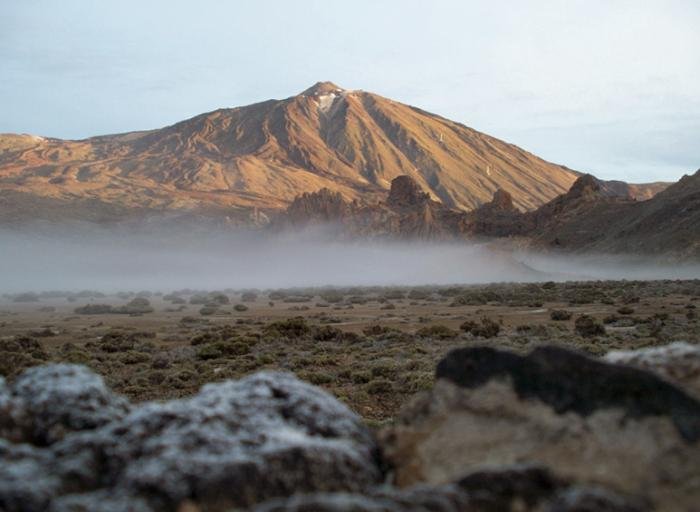
Located on the island of Tenerife this is the home of the largest largest volcano (and the highest peak) in Spain which last erupted in 1798. The volcanic cones and the lava outcrops form an extraordinary conjunction of colours and shapes, and are home to a wide diversity of flora of great biological value.
Because of the unpolluted clear skies people interested in stars and the solar system travel from across the world to this place. The spectacular landscape of great ecological value lies at the foot of the colossal volcano. The Teide is the volcanic formation located on an ancient and gigantic cauldron-shaped depression, formed by two semi-calderas separated by the Roques de García rock formations.
Plant and animal species that are unique in the world live in the shadow of the Teide. There is an amazing variety of plants such as Teide broom, Red echium, Blue echium, the Guanche rose (Bencomia extipulata), Flixweed, Rosalillo de cumbre (Pterocephalus lasiospermus), Silver thistle (Stemmacantha cynaroides)…
The most important species in the park are the invertebrates with more that 700 species of insects recorded with 50% being endemic to the area.
There are some species of reptiles (such as the Tenerife lizard) and birds (Egyptian vulture, Sparrow hawks, Lesser kestrels, Red kite),.
Mammals are scarce but the Mouflon can be seen grazing on the slopes along with rabbits and there are also five species of bat recorded.
Lots of hotel choices on the Island of Tenerife here.
Ronda Today
Everything you need to know before you visit Ronda “The city of dreams” in Andalucia. https://www.rondatoday.com/
Visit Cádiz
Planning on visiting Cádiz? Tourist information. Monuments. Hotels. Activities. City guides: https://visitingcadiz.com/
The Caminito del Rey
Find tickets for the Caminito del Rey: https://www.caminodelrey.es/
Wildside Holidays – Spain
Take a trip on the Wildside! Discover the wildlife and nature of Spain, its Natural and National Parks and find the top wildlife, activity and walking holiday companies.
Iberia Nature Forum
Struggling with identifying those bugs and beasties? Why not check out the Iberia nature Forum! https://iberianatureforum.com/
I’ve been living in this lovely area of Western Andalucia for the last 20 years or so and dedicate most of my time to the running of English language tourist information websites for the towns of Cádiz, Ronda, Grazalema, the famous or infamous Caminito del Rey, and also Wildside Holidays, which promotes sustainable and eco-friendly businesses running wildlife and walking holidays in Spain. My articles contain affiliate links that will help you reserve a hotel, bus, train or activity in the area. You don’t pay more, but by using them you do support this website. Thankyou!

If you are in the South of Spain in Andalusia I highly recommend visiting 2 of my favorit natural parks: Parque Natural del Estrecho which has beautiful views of the Straights of Gibraltar and wonderful birds. And the other one about 2 hours away, the Sierra de Grazalema Natural Park with its rocky peaks and deep gorges, including the Zahara el-Gastor lake that’s well worth the visit.